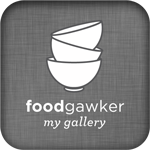
Stock image via Dreamstime.com
Behind every beautifully plated dish, every dreamy drizzle of sauce, and every artfully styled brunch spread is a food blogger trying to turn passion into impact—and income. But in today’s crowded digital pantry of content, standing out isn’t just about how good your food looks or how well you write your recipes. It’s about strategy.
Whether you’re just starting your food blog or looking to take it from hobby to full-blown brand, this guide will walk you through the essential marketing strategies every food blogger needs to know. From visual branding to SEO, from email newsletters to smart use of stock-style images, here’s how to grow your audience—and keep them coming back for seconds.
1. Nail Your Niche (and Your Voice)
The first step to successful marketing is knowing who you are. “Food blogger” is a broad term. Are you focusing on vegan desserts? Keto meal prep? Family-friendly weeknight dinners? Sustainable cooking? Cultural cuisine?
Your niche should reflect both your passion and your audience’s needs. The more specific you are, the more your content resonates with people looking for exactly what you offer.
But don’t stop at the food—craft a unique voice. Whether it’s cheeky humor, calm guidance, or heartfelt storytelling, your tone helps build connection and loyalty.
2. Build a Strong, Recognizable Brand
Consistency builds trust—and trust builds traffic. Your blog, social media, and promotional materials should look and feel like they belong to the same world.
To brand effectively:
- Choose a cohesive color palette and font suite
- Create a memorable logo or wordmark
- Use consistent photo editing styles
- Stick to a defined voice and writing style
When someone sees your content in a Pinterest feed or Google search result, they should immediately think, That’s [Your Blog Name].
3. Invest in Visual Storytelling
In food blogging, your images are your first impression. Gorgeous photos stop the scroll, increase shares, and drive clicks.
Best practices include:
- Shoot in natural light
- Use props and backdrops that align with your brand
- Show process shots (not just the final dish)
- Maintain consistent angles and editing styles across your feed
While original content is essential, don’t shy away from integrating stock-style food photos to complement your posts—especially for headers, newsletters, or filler content on busy weeks. Just be sure to choose images that match your tone and aesthetic.
4. Master SEO (Search Engine Optimization)
SEO is one of the most powerful tools in your marketing toolkit. When optimized properly, your blog posts can show up on Google and drive thousands of organic visitors—every month, on autopilot.
Here’s what to focus on:
- Keyword research: Use tools like Google Keyword Planner, Ubersuggest, or KeySearch to find relevant terms with good search volume.
- Title tags and meta descriptions: These should be compelling and include your keywords.
- Structured data and alt text: Help search engines understand your content.
- Mobile optimization: Your site should load fast and look great on phones.
Don’t over-optimize, though—write for humans first, then search engines.
5. Leverage Pinterest as a Discovery Engine
For food bloggers, Pinterest is pure gold. It functions more like a search engine than a social media platform, and your pins can drive long-term traffic to your blog.
To win on Pinterest:
- Design vertical pins (2:3 ratio)
- Use keywords in your pin titles and descriptions
- Link every pin directly to the relevant blog post
- Pin regularly and repurpose older posts
Canva is a great tool for creating branded Pinterest graphics that align with your blog’s aesthetic.
6. Create a Weekly Email Newsletter
While social platforms rise and fall, your email list is an asset you truly own. It allows you to communicate directly with your most loyal readers and drive consistent traffic.
Email content ideas:
- Weekly recipe roundups
- Behind-the-scenes kitchen tips
- Exclusive content or early access to new posts
- Links to your latest blog content and top-performing pins
Use a simple, branded template and include a call-to-action in every email.
7. Engage Authentically on Social Media
You don’t need to be on every platform—but you should dominate the ones where your audience lives. Instagram, TikTok, and Facebook are key for most food bloggers.
Tips for better engagement:
- Share both polished content and behind-the-scenes moments
- Use interactive features like polls, Q&As, and reels
- Respond to comments and DMs
- Use relevant hashtags without overstuffing
Remember: social media is about connection, not just broadcasting.
8. Collaborate and Cross-Promote
There’s plenty of room at the table. Collaborating with fellow bloggers, chefs, or food brands can help you reach new audiences and build credibility.
Some collaboration ideas:
- Guest blog swaps
- Instagram takeovers
- Shared challenges (e.g., “7-Day Salad Series”)
- Featuring each other’s recipes in newsletters or roundups
Cross-promotion builds community and helps everyone grow faster.
9. Monetize Strategically Without Losing Trust
Once you’ve built a strong brand and loyal audience, it’s time to monetize. But do it in a way that aligns with your values and serves your readers.
Common monetization channels:
- Affiliate marketing (e.g., linking to kitchen tools or ingredients)
- Sponsored posts with brands you genuinely love
- Ad networks like Mediavine or Raptive (formerly AdThrive)
- Ebooks or meal plans
- Online cooking classes or workshops
Keep the balance: your blog should still be a free, valuable resource first and foremost.
10. Stay Consistent—But Be Flexible
The food blogging world changes fast. New platforms emerge. Algorithms evolve. Tastes shift. The key is to stay true to your brand while being open to new ideas.
Build systems:
- Use a content calendar
- Batch shoot and write
- Automate when possible
- Track performance and tweak strategy
It’s okay to adjust course, drop what’s not working, and try fresh ideas. What matters is that you keep showing up.
Final Bite: Your Blog Is a Brand—Treat It Like One
Behind every viral recipe or perfectly styled photo is a smart, strategic food blogger who understands that content alone isn’t enough. To grow and sustain a loyal following, you need a blend of creativity, analytics, and authentic connection.
From optimizing your blog for SEO to developing a recognizable visual style (with the occasional help of stock-style content), these marketing strategies are your secret sauce to success.
So sharpen your knives, clean your lens, and get ready to plate your content like a pro—because your next post could be the one that brings your brand to the table of thousands.





















